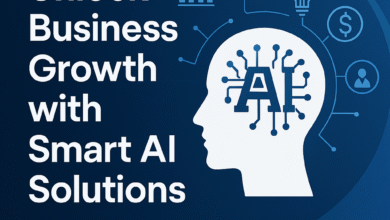DBMS Tutorial: Learn Database Management System Easily

When it comes to organizing, storing, and retrieving data efficiently, nothing is more fundamental than a Database Management System (DBMS). Whether you are a beginner aiming to understand the core concepts of databases or a student preparing for exams, this DBMS Tutorial from Tpoint Tech will help you learn step by step in a simple and structured way.
In today’s digital world, data is everywhere. Every app you use — from social media to online banking — relies on a database management system to function seamlessly. But what exactly is DBMS, why is it so important, and how can you learn it easily? Let’s break it down.
What is a Database Management System?
A Database Management System (DBMS) is software designed to manage databases. It allows users to store, organize, retrieve, and update data efficiently. Instead of dealing with raw data files, DBMS provides an interface between the user and the data, ensuring that information is well-structured and accessible.
For example, imagine a university managing student records. Without DBMS, every record would be stored manually in files, making it time-consuming and error-prone. With a DBMS, all student information — names, roll numbers, grades, and courses — can be managed easily with just a few queries.
Why Learn DBMS?
Learning DBMS is essential because:
- Foundation of Data Handling: Almost every software project involves data storage and retrieval.
- Career Growth: Companies worldwide look for professionals skilled in handling databases.
- Efficiency: DBMS reduces redundancy, ensures data integrity, and provides secure access.
- Real-World Applications: From booking movie tickets to handling bank accounts, DBMS is everywhere.
By following this DBMS Tutorial, you will not only understand the concepts but also see how they are applied in real-world systems.
Key Components of DBMS
To fully grasp DBMS, let’s look at its essential components:
- Database Engine: The core service for storing and retrieving data.
- Database Schema: The structure that defines how data is organized.
- Query Processor: Helps interpret and execute queries.
- Transaction Manager: Ensures consistency when multiple users access data.
Each component plays a vital role in making a database management system reliable and efficient.
Types of Database Management Systems
Different systems are designed for different use cases. The major types include:
- Hierarchical DBMS: Organizes data in a tree-like structure.
- Network DBMS: Uses a graph structure with multiple relationships.
- Relational DBMS (RDBMS): The most popular type, where data is stored in tables (rows and columns). Examples: MySQL, Oracle, PostgreSQL.
- Object-Oriented DBMS: Stores data as objects, combining database capabilities with object-oriented programming.
Among these, Relational DBMS is the most widely used and often the focus of any DBMS Tutorial.
Advantages of DBMS
Why do we need DBMS instead of simple file storage? Here are some advantages:
- Data Integrity: Ensures accuracy and consistency.
- Security: Provides controlled access through authentication.
- Reduced Redundancy: Avoids duplicate data storage.
- Concurrent Access: Multiple users can access data at the same time.
- Backup and Recovery: DBMS provides reliable mechanisms for data protection.
These advantages explain why organizations invest heavily in learning and implementing database management systems.
Core Concepts to Learn in DBMS
In this DBMS Tutorial, some must-know concepts include:
- Data Models: Hierarchical, relational, entity-relationship, and object-based.
- Keys in DBMS: Primary key, foreign key, and candidate key — crucial for maintaining relationships.
- Normalization: A process to organize data and reduce redundancy.
- SQL (Structured Query Language): The standard language to interact with a relational DBMS.
- Transactions: Ensures data reliability using properties like ACID (Atomicity, Consistency, Isolation, Durability).
These form the backbone of any database management system learning path.
Applications of DBMS in Real Life
You’ll find DBMS in almost every sector:
- Banking: Managing transactions, accounts, and customer details.
- Education: Handling student records, courses, and exams.
- Healthcare: Maintaining patient records and hospital management systems.
- E-commerce: Product catalogs, user accounts, and order management.
- Social Media: Profiles, posts, and friend connections.
This shows why learning DBMS is not optional but essential for anyone interested in technology or business.
How to Learn DBMS Easily
At Tpoint Tech, we recommend the following approach:
- Start with Basics: Understand what DBMS is and why it matters.
- Learn by Examples: Study real-world use cases to connect theory with practice.
- Focus on RDBMS: As it is the most widely used type.
- Explore SQL: Learn queries for creating, reading, updating, and deleting data.
- Practice Regularly: Use free tools like MySQL or PostgreSQL to experiment.
- Move to Advanced Concepts: Study normalization, transactions, and distributed databases.
By following this path, you will master DBMS step by step without feeling overwhelmed.
Future of DBMS
With the rise of big data and cloud computing, the future of DBMS is evolving rapidly. Cloud-based databases, NoSQL systems, and AI-powered database optimization are becoming mainstream. However, the fundamentals remain the same. A solid understanding of DBMS basics will prepare you for these advanced systems.
Conclusion
This DBMS Tutorial has walked you through the essentials of the database management system — from definition and types to advantages and real-world applications. Whether you are a student, IT professional, or someone curious about technology, DBMS is a skill that adds immense value.
At Tpoint Tech, we make learning simple, structured, and practical. By practicing consistently and exploring real-world examples, you’ll gain the confidence to manage and optimize databases effectively.
If you want to take your first step into the world of data, start with DBMS today — it’s the foundation for everything in the digital world.
For more content, click here https://theglobalnewz.com/artificial-intelligence-a-beginners-guide-to-the-future-of-technology/



